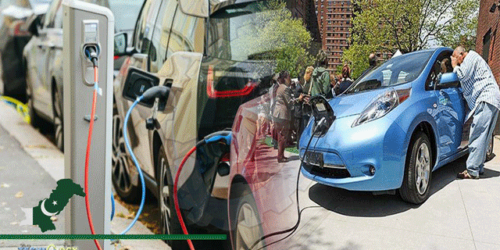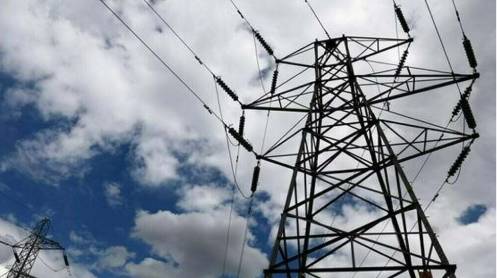Innovations are constantly occurring in every industry, but every once in a while, we see a disruptive innovation entirely transform a complicated product. It is often a simpler, more affordable, and accessible solution that revolutionizes the market.
We saw this with the advent of cheap transistor radios in the 1950s, as they ushered the era of portable electronics, and then again in 2007 when smartphones, as we know them, were launched and further democratized access to information. 14.5 billion Smartphones have been sold since 2007, disrupting not just the telecommunications industry but also photography, entertainment, and e-commerce. The past decade has seen another disruption begin to take place, this time in a century-old industry that has only seen limited innovation. The automobile industry is poised for a major overhaul, it is about to lose the internal combustion engine.
Advantages of EVs
Electric Vehicles (Evs) Have Inherent Design Advantages That Are Helping Propel These Vehicles From Obscurity To Mainstream Options In Just Under A Decade. These vehicles have much simpler drivetrains with fewer moving parts (about 20 moving parts in an EV compared to 2,000 for internal combustion engine vehicles), which makes these vehicles cheaper to maintain as fewer parts break and need servicing.
The electric drivetrain is also significantly more efficient than the internal combustion engine. EVs convert over 77% of the electrical energy from the grid to power at the wheels. Internal combustion vehicles only convert about 12%–30% of the energy stored in gasoline to power at the wheels. EVs also have significant performance benefits. They are quiet and provide strong acceleration thanks to the constant torque provided by electric motors. Besides these advantages to the EV owner, EVs also have the potential to address major problems like climate change and air pollution.
The transportation sector accounts for approximately one-quarter of global anthropogenic CO2 emissions and Internal Combustion Engine Vehicles (ICEVs) are responsible for about 77% of these emissions.
Pakistan ranks 8th on Germanwatch’s Long-Term Climate Risk Index while poor air quality is also becoming a serious concern. The transportation sector contributes to more than 70% of the fine particulate matter (PM2.5) and PM10 emissions in large urban centers in Pakistan. The ambient air pollution is responsible for 135,000 deaths per year and costs the economy 5.88% of GDP or $47.8 billion. EVs present a huge opportunity to curtail our greenhouse gas emissions and ambient air pollution, especially if the electricity used to power these vehicles is produced cleanly, as these vehicles have no tailpipe pollutants.
Global transition towards EVs
Governments around the world are realizing these benefits and have used public policy to encourage the uptake of EVs in their countries. Consistent policy support, advances in electric vehicle technologies, and education and awareness on the benefits of EVs have helped these vehicles see dramatic growth and capture significant market share over the past decade.
7 million EVs had been deployed in over 100 countries by 2020. China’s cumulative passenger electric vehicle sales through 2019 reached 3.66 million, accounting for 48% of the global stock. A common theme in the major markets for EVs has been regulations, incentives, charging infrastructure deployment, and consumer promotion actions to spur electric vehicle uptake.
This helped the share of EVs in new passenger vehicle sales reach a record-high of nearly 3% globally in 2019. Norway achieved an electric vehicle share of 58% in 2019, ranking first globally. More than a dozen countries have proposed timelines to transition to all zero-emission vehicles within the next three decades. In addition, many states and provinces have set more aggressive goals than their national governments, and cities, in particular, have been targeting a much faster transition.
A great opportunity for Pakistan
Pakistan also joined the list of these countries in November 2019 when it passed the National Electric Vehicle Policy (NEVP), which was later updated in December 2020. The NEVP aims at seeing electric vehicles capture 30% of all the passenger vehicle and heavy-duty truck sales by 2030, and 90% by 2040. For two and three-wheelers and buses; the target is 50% of new sales by 2030 and 90% by 2040.
The NEVP has been hailed as the right step not just for the environment but also for the economy. A transition to EVs puts Pakistan on a path to achieve its climate goals as outlined by the Climate Change Act of 2016 and the Pakistan Environmental Protection Act 1997. It can also breathe a new life in the economy as it can drastically reduce oil imports and spur economic growth by bringing EV and charging infrastructure production and job opportunities home.
Pakistan’s domestic manufacturers, represented by Pakistan Electric Vehicles Manufacturing Association (PEVMA), now have the opportunity to electrify the 180,000 automobiles and 1.9 million motorcycles that are sold in the country annually. As Asia’s fastest-growing automobile industry, with production and sales growth of 171% and 172.5% respectively between 2014 and 2018, the industry provides huge opportunities to the nascent electric vehicles segment.
As an early adopter, Pakistan can also build the production capacity to cater to neighboring Asian countries where the automobile industry is also growing at breakneck speeds. Pakistan’s Automobile industry contributes 2.8% to its GDP. The EV industry has the potential to increase the size of the industry significantly and also support in import substitution, job creation, and technology transfers. EVs can also help improve urban air quality, reduce noise pollution, and significantly reduce the health costs associated with pollution in urban areas. However, consistent policy support is a prerequisite for this transformation.




